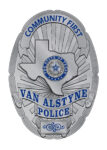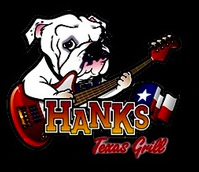The Davis Gang — a new book set in the Bonnie & Clyde days of yore
by Billy Keith Bucher
Author Vicki Welch Ayo is one of those wonderful writers who can come up with all the ingredients of a great story at seemingly the drop of a hat and go with the story line as if she had lived it herself. Do you remember the first time you saw the movie “Bonnie and Clyde” and were blown away by all of the energy exhibited when Clyde came to take Bonnie away with him? That first moment when Faye Dunaway was at the top of the stairs looking down at Robert Redford was movie magic, to be sure.
Memoirs of The Davis Gang takes this story one step further as Ms. Ayo delves into the memories of Gean Kearns’ four aunts who came alive in Ms. Ayo’s depiction of this outlaw gang in the thirties. To be sure, there weren’t many outlaw women in the early 30s, so it was not unusual that the women were mistaken for the outlaw Bonnie Parker in their escapades and their growing legend add to her legend.
“The Davis Gang,” writes Ms. Ayo, “was made up of siblings Dan T., Beryl, Dorothy, Estelle, and Modelle Davis plus a revolving door of the girls’ outlaw boyfriends and husbands like Earl “Baby Face” Joyner, Earnest Gray, Joseph Kearns, and Hunt Watson, to name a few. The girls liked to rob banks and had a penchant for the men who made it happen. After all their meticulous planning and instructions, the men would do the dirty work while the sisters waited behind the wheel of the getaway car with the motor running. No stranger to a gun, the girls were not afraid to protect what was theirs, carrying a loyalty to the gang that extended to jail and prison breaks when their men were captured.
They were called the Davis Gang because the sisters were credited with being “the brains.” They ran interference for the key bank robbing members like Ivy Morgan and Raymond Hamilton, which became the girls’ modus operandi. Gean Kearns, who gave a lot of the information to Ayo, said, “I know that they were all so calm and practiced at what they did. They cased every bank job and made sure that when they went in, they had a way out. The sisters not only had a driver waiting outside; they also had a lookout watching to make sure their escape route was clear.”
While Ayo was working on the Boys of Houston books, Gean, who had a keen eye for vintage posters, kept alluding to the stories of members of his own family who would make a good story; and one time he mentioned the fact that he would perhaps like Vicki to actually do the story. I gather that he saw the amount of work that she put into the research of the effort, which was massive. He also mentioned an antidote to Vicki about when his aunts realized that he was getting restless, they would bring out a big sack of sack of coins from a back room from somewhere in the house and put them in front of him. The sacks were filled with double-eagle gold pieces that the government brought in during the Depression and he made little forts and castles out of the coins. Just any like any boy, he would spend time creating forts out of those unique coins, but learned later that the coins were stolen loot. Sometimes, two or three of his gun moll aunts would sit down with him and just make castles!
The story of The Davis Gang is greatly helped along by a number of photos which Ms. Ayo came up with.
One picture which I thought was of great interest was when the gang was getting ready to rob their first bank, the Grapeland State Bank, that one of the women had gotten both men and women to dress up in all white and stand in front of the getaway car as if to document the moment. In another great picture, there is a shot of Estelle standing with outlaw Caesar G. Wells, who was sporting two-toned spectator shoes with a white straw hat and a black brim. They looked very dapper, indeed.
“Both Aunt Estelle and Aunt Dot loved to dance,” Gean recalled. “I saw what I would call a flapper dress, a hat and purse with strings of beads hanging in Aunt Estelle’s closet. I would sometime hang out with her in her room with all of her windows open and she would play old albums that I think were 78 RPMs. That’s where I learned about the Blues and Jazz.”
Gean is emerging as a big factor in promoting the book, which can be found on Amazon.com and Barnes & Noble. He is an expert in old posters and helped Vicki so much with bringing that book about. He now has been giving presentations in the Big Bend area and is expanding his focus. He will begin to supply books to Texas Department of Transportation rest stops. But doing presentations is what he loves the most, and he says that the more he is talking about the gang, the more he is remembering. Little things like sometimes going to the house where they lived in Houston and they not letting him in, citing “family business.” He realizes now that what it meant was that they were counting money. He also remembers a conversation they were having about taking Bonnie and Clyde supplies in the Piney Woods where the mysterious lights flutter at night from swamp gases.
I see a movie as coming out of this that would challenge “Bonnie and Clyde.” My father was a history major in high school and taught it for several years before he became a grade-school principal. And check out a photo on the back cover of a club in the swamps only accessible by water. It served as bar and gambling and a brothel as well.
This book deserves to become a movie and I think PBS’ Ken Burnes could do a good job on this one. Kudos on this book. Vicki Welch Ayo didn’t know what she had when she started and through her hard work has captured a real period piece of time that still intrigues us today. And well it should. And Gean becoming a real entity in his presentation and probably could be due a story of his own soon.
Category: *- Features












